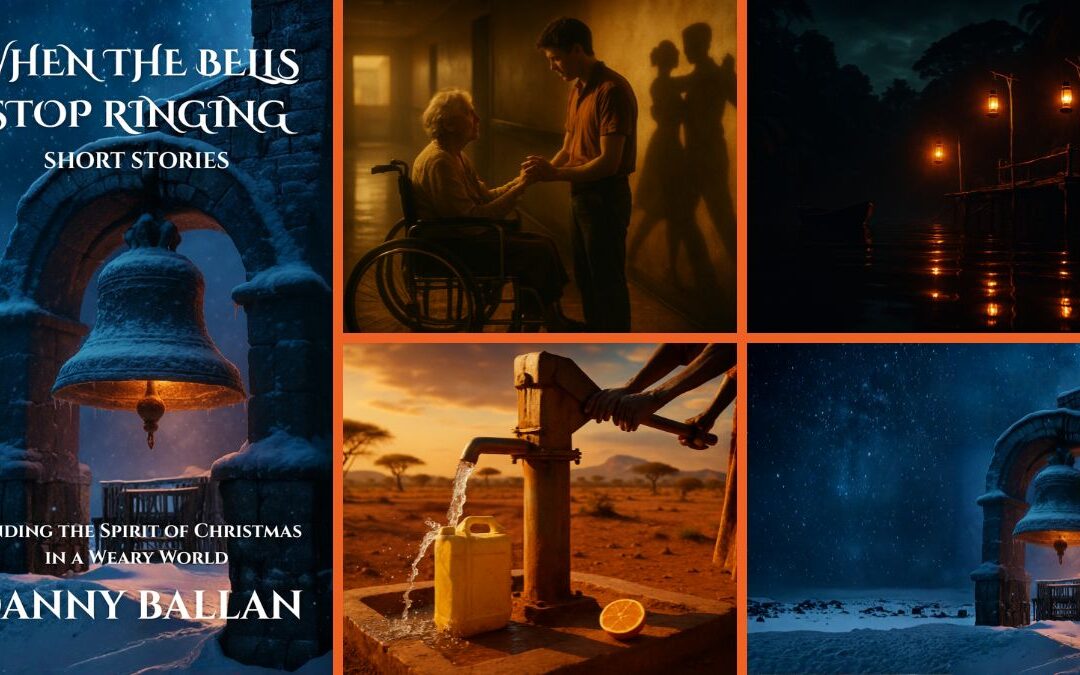- Audio Article
- The Economics of Peace — Why Stability Pays Off
- The Dividend You Can’t Parade — How Stability Compounds
- Why Trade Loves a Good Night’s Sleep
- Human Capital — The Engine That Starts Only in Quiet
- The Budgetary Jaws — Guns, Butter, and the Opportunity Cost We Pretend Not to See
- Cooperation as Competitive Edge
- Peace and Innovation — The Boring Lab Where Big Ideas Grow
- Tourism, Diaspora, and the Return of the Absent
- Health, Productivity, and the Hidden GDP of Calm
- The Municipal Algebra of Trust
- A Tale of Two Strategies — Militarized Vigilance vs. Civil Resilience
- Historical Echoes, Practical Conclusions
- The Receipt — What to Buy with Quiet
- MagTalk Discussion
- Focus on Language
- Vocabulary Quiz
- The Debate
- Let’s Discuss
- Learn with AI
- Let’s Play & Learn
Audio Article
The Economics of Peace — Why Stability Pays Off
War is a spectacular spender. It burns through budgets like a bonfire fed by spreadsheets, converting steel and rhetoric into deficits and grief. Peace, by contrast, is boring in the best way: it hums. It is the steady whirr of factories that don’t shut at dusk, the invisible choreography of trucks that arrive on time, the quiet arithmetic of payrolls met and mortgages paid. If morality alone could end wars, history would be shorter. But morality often needs an ally with a calculator. This is that ally: the economics of peace.
The Dividend You Can’t Parade — How Stability Compounds
Peace rarely delivers a headline; it delivers a compounding return. Investors call it “lower risk, lower cost of capital.” Ordinary life calls it sanity. When violence recedes, interest rates tend to follow; banks lend, firms expand planning horizons from weeks to years, and projects worth doing suddenly pass the “does this make sense?” test. The real magic isn’t the initial bump—it’s compounding. A port that stays open adds a percent to throughput; that percent, repeated, becomes a decade’s worth of prosperity. The miracle is not dramatic growth; it’s durable growth.
Why Trade Loves a Good Night’s Sleep
Trade is allergic to surprise. Insurance premiums climb with uncertainty; so do warehouse buffers, redundant suppliers, and the thousand small costs that creep into balance sheets when truckers aren’t sure which road is safe. Peace, therefore, is not just the absence of artillery; it’s the predictability that lets perishable goods beat the clock and just-in-time systems avoid turning into just-missed-it disasters. Border agents who stamp instead of stall are unsung champions of living standards.
Human Capital — The Engine That Starts Only in Quiet
The most expensive thing a country can waste is the mind of a child who never learns to read because school was closed, or the hands of a technician who emigrates because the lights flicker more than they shine. Peace is the oxygen of human capital: teachers stay, clinics function, apprenticeships exist, and the ladder of skills doesn’t have missing rungs. You can import machinery; you cannot import a decade of consistent schooling for an entire generation and expect it to fit overnight.
The Budgetary Jaws — Guns, Butter, and the Opportunity Cost We Pretend Not to See
Every dollar has a shadow: the thing we didn’t fund when we chose something else. War expands defense lines on the budget; pensions, preventive care, water systems, and research feel the squeeze. Politicians can defer maintenance; asphalt doesn’t vote. But the bill arrives later with interest—potholes that eat axles, pipes that burst, hospitals that hemorrhage staff. Peace reopens the jaw: as the emergency shrinks, the public sector can reallocate from immediate destruction to delayed construction. That’s not stinginess; it’s adult math.
Cooperation as Competitive Edge
Nations that practice cooperation—internally across parties and sectors, and externally across borders—convert trust into throughput. Ports coordinate with rail; customs talks to health; universities talk to industry; regulators consult instead of surprise. None of that is glamorous. All of it is profitable. Cooperation reduces transaction costs, which is a technical way to say, “People stop wasting time proving they’re not cheating.” A firm in a cooperative economy spends more on design and less on defensive paperwork. That shows up in productivity—and in patience.
Peace and Innovation — The Boring Lab Where Big Ideas Grow
War accelerates certain inventions—the grim kind that solve problems only war creates. Peace, however, staffs the lab year after year. Stable funding cycles keep researchers from living grant to grant; startups can test, fail, and try again without evacuation plans buried under their prototypes. Clusters—those fertile neighborhoods where ideas bump into each other—require safety, coffee, and a city that still functions on Monday morning. Peace gives innovation the one variable no algorithm can fake: time.
Tourism, Diaspora, and the Return of the Absent
Stability flips a switch in the global imagination. Tourists pick places they can photograph in daylight without an armored vehicle in the background. The diaspora, that vast reserve of skills and savings abroad, starts sending more than remittances; it sends people back—seasonally at first, then permanently—opening cafes, clinics, and coding bootcamps that double as family reunions. When the story of a country changes from “don’t” to “do,” the return ticket becomes less one-way.
Health, Productivity, and the Hidden GDP of Calm
Stress is an economic variable. Violence increases cortisol and clinic visits; it shortens attention spans and lifespans. Peace lowers baseline anxiety, which means fewer sick days, steadier sleep, and more focus at the job site and the classroom desk. That shows up in output statistics nobody cheers for on television, and in household budgets that stop leaking on pharmaceuticals meant to cope rather than cure.
The Municipal Algebra of Trust
Cities that trust their citizens and are trusted back collect taxes with less friction, regulate with less force, and spend with fewer leaks. Peace makes audits possible because auditors can walk streets without escorts. It makes public procurement less corrupt because competition returns; firms no longer have to budget for “facilitation.” The algebra is simple: less leakage plus more compliance equals room for libraries, buses, and sewers. Those don’t trend; they transform.
A Tale of Two Strategies — Militarized Vigilance vs. Civil Resilience
A country can over-invest in the posture of strength and under-invest in the practice of stability. Tanks make bad teachers, and jets make poor water systems. Civil resilience—courts that work, cops who de-escalate, power grids that don’t collapse under heat—prevents many of the “security” crises that hard power later has to mop up at ten times the cost. Peace is cheaper not because the world is kind, but because prevention is.
Historical Echoes, Practical Conclusions
When you scan the record, patterns emerge. Societies that de-politicize core institutions—central banks, courts, statistics agencies—weather storms with less panic. Regions that knit trade with neighbors argue loudly yet ship quietly. Polities that treat opposition as an asset, not an enemy, make reversible mistakes instead of irreversible catastrophes. These aren’t morality tales; they’re operating manuals. Peace pays because it frees a country to practice the unromantic arts that build wealth: patience, maintenance, and a bureaucracy that tells the truth.
The Receipt — What to Buy with Quiet
If peace is profitable, what should societies purchase with the surplus? The list is wonderfully boring: early childhood care; vocational routes with prestige, not stigma; transit that makes labor markets bigger; housing that teachers and nurses can afford; digital infrastructure that reaches villages; a public health system that notices small outbreaks before they become big tragedies. None of that cuts a ribbon like a ship launch. All of it pays off like compound interest with manners.
MagTalk Discussion
Focus on Language
Vocabulary and Speaking
Let’s distill language you can use tomorrow morning, not just on policy panels. Start with “opportunity cost.” It sounds like an economics lecture until you use it at work: say yes to a shiny new project, and the cost is the valuable old project you now neglect. Explicitly naming it—“The opportunity cost of this feature is a month of bug fixes”—turns guilt into a calculation and helps you decide like an adult rather than a hero.
“Compounding” is another quiet gem. Your sleep, savings, skills, and relationships all compound—small consistent inputs that become large outcomes. Instead of promising a dramatic turnaround, tell yourself, “I’m aiming for compounding.” You sound steady, and you’ll act accordingly.
“Friction” is wonderfully portable. A chaotic workflow has friction. A conversation that always collapses into blame has friction. Removing friction—cleaning an inbox pipeline, pre-writing meeting agendas—is not glamorous, but it’s how you buy free time from chaos at a discount.
“Runway” isn’t just for startups. It’s how many months you can operate before you need a bailout—financially, emotionally, or physically. When you’re tired, ask, “What’s my runway?” That question discourages bravado and encourages pacing.
“Throughput” helps you care about systems, not sprints. If your team ships a heroic week and then collapses, throughput is low. If your family handles the week without emergency pizza every night, throughput is high. Use the word and watch yourself design for sustainable flow rather than occasional fireworks.
“De-risk” is an action, not a vibe. You de-risk a plan by testing the part most likely to fail first. “Let’s de-risk the vendor integration before we redesign the homepage.” That sentence directs attention and saves pride later.
“Countercyclical” is jargon with a heart. It means doing the helpful thing when everyone else does the opposite—saving in booms, investing in slumps, resting when success tempts you to sprint. Adopt one countercyclical habit and you’ll look suspiciously lucky.
“Absorb shock” beats “never fail.” Systems that absorb shock—by having buffers, backups, and honest post-mortems—bounce back faster. Train yourself to say, “We’re building to absorb shock,” and you’ll choose resilience over perfection every time.
“Crowd in” flips scarcity on its head. Good decisions attract good company: competent people, fair partners, better prices. “If we publish our timelines, we crowd in collaborators who appreciate clarity.” That sentence buys you allies.
Finally, “maintenance.” It’s not the opposite of ambition; it’s the condition for it. Maintenance of friendships, code, sidewalks, and sleep turns one-off wins into a life that works. Anytime you feel the itch for reinvention, ask what a month of maintenance would do first.
Now, speaking. Try a ninety-second update to your team: “Our growth looks flat, but compounding is hiding in the churn reduction. The opportunity cost of another acquisition push is neglecting onboarding, which increases friction and kills throughput. Let’s de-risk by fixing the first-week experience. We don’t need heroics; we need maintenance. That will crowd in better customers and extend our runway.” You’ve just used the vocabulary to build a calm, strategic argument.
Your speaking challenge: record yourself explaining a budget choice at home or work. Use at least eight of the phrases above—opportunity cost, compounding, friction, runway, throughput, de-risk, countercyclical, absorb shock, crowd in, maintenance. Keep your tone low-heat and your verbs strong. Then listen back and swap three abstract nouns for concrete images. Instead of “optimize operations,” say “stop double-entering data.” Instead of “resource constraints,” say “we have four hours, not eight.” Precision is kindness.
Grammar and Writing
Let’s turn the theme into a writing challenge: craft a 900–1,100-word op-ed titled “Peace Has a Profit and Loss Statement.” Your thesis: stability is not merely moral; it is measurably practical, and budgets should show it. You’ll argue that governments and firms ought to publish a “stability annex” with their annual reports: metrics on school days uninterrupted, border wait times, contract enforcement, and health system uptime—because those items predict growth better than slogans.
Structure and grammar, step by step:
- Lead with a scene + concessive thesis. Open with a concrete moment (“At 6:03 a.m., the trucks roll because the bridge held through the storm”), then concede complexity: “Although defense spending can deter real threats, we undercount the returns of prevention.” Concessive clauses (“although,” “even though,” “while”) signal maturity and invite skeptical readers in.
- Use appositives for compression. “Throughput, the unglamorous measure of stuff moving without drama, is what pays salaries.” The appositive (“the unglamorous measure…”) saves a sentence and adds flavor.
- Parallelism for proof. When you list policy levers, keep the rhythm: “Audit procurement, publish timelines, enforce penalties.” Parallel verbs make the argument feel orderly—and order is your brand.
- Relative clauses for specificity. “Firms that publish supplier maps, which reveal bottlenecks before they become crises, recover faster.” The clause carries evidence without footnotes.
- Modals and stance adverbs for calibrated urgency. Pair “must/should/can” with “largely, often, in part.” “Cities should publish water-main ages because leaks are often the prologue to unrest.” You sound urgent, not shrill.
- Causality with discipline. Prefer “is associated with” unless you can show mechanism. When you claim cause, show it: “Because violence closes clinics and clinics vaccinate workers, violence reduces productivity twice.”
- Cohesive devices as handrails. “At first glance… By contrast… More importantly… The upshot…” These are signposts, not billboards; they keep readers upright in your logic.
- Metaphor discipline. Pick one and stick with it—say, “balance sheet.” “Peace credits,” “risk debits,” “dividends of trust,” “maintenance expense that prevents catastrophe write-offs.” Too many metaphors feel like a costume change mid-argument.
Editing clinic:
- Verb audit. Replace “there is/are” with action: “There are gains from” becomes “Gains rise from.”
- Nominalization diet. “Implementation of reform requires” becomes “Implementing reform requires.”
- Sentence cadence. Alternate one long sentence (for nuance) with one short sentence (for spine). “We need calm. We need receipts.”
End with a policy paragraph in present tense for immediacy: “Publish the stability annex this year. Start with school days delivered, clinic uptime, contract enforcement times, border wait medians. Tie mayoral bonuses to those numbers, not to ribbon cuttings. Budget for maintenance before monuments.” Then one line that lands: “If peace is profitable, it deserves a line item.”
If you want to turn this into narrative nonfiction, shift to first person and anchor each section with a human—customs officer, nurse, small exporter—whose day illustrates your claim. Keep the grammar moves; tuck the economics into their pockets.
Vocabulary Quiz
The Debate
Let’s Discuss
- If peace is profitable, why do budgets still privilege crisis spending over maintenance? Explore electoral incentives, media attention cycles, and ways to reward prevention publicly.
- Which local “frictions” (permits, ports, paperwork) throttle your city’s throughput? Map three that could be fixed in six months and who would need to cooperate.
- What would a “stability annex” include for your community—school days delivered, clinic uptime, bus reliability, contract enforcement times? Debate metrics and guardrails against gaming.
- When is saving or investing countercyclical for households—education during downturns, home maintenance before failure? Share strategies that proved resilient.
- How can diaspora networks “crowd in” investment beyond remittances—co-ops, mentorship pipelines, seasonal return programs? Consider practical designs, not slogans.
Learn with AI
Disclaimer:
Because we believe in the importance of using AI and all other technological advances in our learning journey, we have decided to add a section called Learn with AI to add yet another perspective to our learning and see if we can learn a thing or two from AI. We mainly use Open AI, but sometimes we try other models as well. We asked AI to read what we said so far about this topic and tell us, as an expert, about other things or perspectives we might have missed and this is what we got in response.
Three levers often undervalued in peace economics:
- The micro-infrastructure of trust. Everyone loves highways; almost nobody budgets for metering, calibration, and open data. Publish reliable, machine-readable stats—border wait medians, school attendance, clinic uptime—and maintain them. Investors will treat those feeds like oxygen; citizens will treat them like proof. Trust builds fastest when people can inspect the plumbing.
- The price of reliability. Cheap electricity that disappears at 4 p.m. is expensive electricity. Price reliability into contracts and tariffs—reward uptime, penalize flicker. The same logic applies to transit, water, and digital services. Peace feels real when the light switch answers “yes” every time.
- The boring revolution: procurement. Create a clean, competitive marketplace for maintenance—framework agreements for road repair, school roofs, clinic generators—with transparent dashboards. Pay on verified performance, not on invoices with impressive seals. The multiplier on honest procurement is ridiculous: every saved dollar funds another textbook or nurse.
Two final thoughts. First, skilled return beats cash return. Build programs that welcome back expertise with dignity—fast-track licenses, matched grants, lab benches waiting. Second, teach compounding early. If students grasp how small habits (and small interest rates) snowball, they will recognize peace as an engine, not a mood. A society that understands compounding is a society that will defend maintenance with passion.
Let’s Play & Learn
Leaning Quiz: Peace Dividends: Can Stability Supercharge Growth?
“Peace dividend” isn’t just a nice phrase—it’s an economic reality for many societies that step out of conflict and into stability. This quiz walks you through real-world case studies where peace, reconstruction, and smart policy set the stage for investment, jobs, and rising living standards. With each question, you’ll get a hint and conversational feedback so you don’t just pick an answer—you learn the why behind it: institutions, human capital, trade integration, infrastructure, entrepreneurship, and more. By the end, you’ll see how peace can move money from weapons to classrooms, from checkpoints to supply chains, and from fear to long-term planning.
Learning Quiz Takeaways
Peace is an opening, not a finish line. The case studies you just explored show a simple arc: when violence recedes, economies can finally do what they’re designed to do—match ideas with capital, workers with firms, and local strengths with global demand. But the countries that truly cash in on a peace dividend share more than a ceasefire; they share institutions, infrastructure, skills, and openness. Let’s pull those threads together into a practical playbook you can recognize—and explain—whenever a society moves from conflict to cooperation.
Start with credibility. Investors—whether they’re local shop owners or global manufacturers—care about the same three questions: Will the rules be fair? Will the lights stay on? Will I be able to sell what I make? West Germany’s “Wirtschaftswunder” is famous for a reason: currency reform cleaned up prices; courts and competition policy stabilized the rules; reconstruction aid provided capital; and European integration offered customers. Japan’s postwar rise leaned on the same triangle, with a twist: deliberate technology upgrading and export discipline. The common denominator was peace that made long-term bets thinkable and institutions that made them worthwhile.
Human capital is the quiet engine. South Korea’s transformation underscores how education turns stability into productivity. When large numbers of students move through solid primary and secondary schools, and when technical colleges teach the skills firms actually need, a country doesn’t just recover—it reinvents itself. This isn’t glamorous policy, but it is compounding policy. Each graduating cohort expands the frontier of what local firms can produce, manage, and innovate. In post-conflict settings, pairing demobilization with training and apprenticeships prevents a tragic waste of talent and lowers the risk of relapse into violence.
Infrastructure is the visible promise. Repaired roads, reliable power, functioning ports, and expanding broadband don’t automatically create prosperity, but they remove the frictions that make prosperity impossible. The first truck that crosses a reopened bridge carries more than goods; it carries a signal that tomorrow will look like today, only better. That signal draws wholesalers, logistics firms, and manufacturers back into the picture. It also revives tourism once safety improves and airports, hotels, and heritage sites are ready to welcome visitors. A destination is a product; peace lets you package it.
Openness multiplies progress. Countries that reconnect to regional and global markets get scale, variety, and learning. Regional trade agreements and customs unions do not replace domestic reform; they reward it. When a firm can sell to a market ten times larger, it has an incentive to upgrade quality, adopt new processes, and seek certifications. That, in turn, raises wages and deepens supply chains. East Asian success stories illustrate this dynamic: diversified exports, relentless quality improvement, and the humility to learn from competitors. Peace reduces border frictions; policy ensures those open borders actually deliver opportunity.
Macroeconomic stabilization sets the tempo. Sound budgets and credible central banks don’t build bridges or teach classes, but they make all of that cheaper by lowering borrowing costs and anchoring inflation. Households can save; businesses can plan; lenders can extend credit on reasonable terms. In the early recovery phase, predictability is itself a growth input. Without it, reconstruction funds leak into inflation and capital flees to safer places. When stabilization sits alongside transparent procurement and independent audits, the return on every public dollar rises—and citizens see and trust the results.
Governance is the gatekeeper. Corruption is the tax you pay on everything when rules are weak. It siphons off reconstruction funds, slows permits, distorts competition, and scares away investors who don’t want to navigate a maze of informal payments. The antidotes are boring but powerful: e-procurement platforms, open budgets, asset declarations, strong watchdogs, and courts that enforce contracts. When rules are predictable, even modest firms can grow, because they can scale their behavior, not their political connections. Credible statistics agencies also matter; you can’t manage what you can’t measure, and investors will not commit to a story that can’t be tracked.
Security reforms translate peace into daily life. Demobilization, demining, community policing, and justice reform reduce the ambient risk that keeps capital on the sidelines. Lower risk premia show up in cheaper credit and longer project timelines. In rural areas, that can mean the difference between subsistence and value chains—coffee moving from farm to roaster to export; fruit going from smallholder orchards to refrigerated trucks to supermarkets. Colombia’s experience illustrates how security improvements can unlock logistics corridors and formalize rural industries, bringing new income to places long cut off from markets.
Services are the glue. Health and education spending are not just social goods; they are economic infrastructure. Healthy workers are more productive, and educated workers are more adaptable. In many recoveries, vocational programs tied to real employers move the needle quickly, while universities and R&D centers build the pipeline for management and innovation. A layered system—broad basic education plus targeted technical training—has powered much of East Asia’s rise and remains a template for post-conflict societies that want manufacturing and services to thrive.
Narrative and branding aren’t superficial. Investors and tourists respond to stories as much as spreadsheets. “We are open for business” lands differently when it’s backed by visible projects, fair rules, and friendly airports. Countries that thoughtfully preserve heritage sites, host cultural festivals, and streamline visas are not just seeking visitors—they’re broadcasting stability. The same logic applies to enterprise zones or startup visas: policy plus messaging can tip marginal decisions toward “yes.”
What about aid? Foreign assistance can be catalytic—rebuilding a bridge here, expanding a clinic there, co-financing SME credit lines. But the case studies make one point repeatedly: aid works best when it supports domestic capacity and reforms. It is a complement, not the foundation. The durable elements of a peace dividend—institutions, education, infrastructure, openness—are homegrown commitments, not imported packages.
Risks remain, and naming them is part of the lesson. Corruption, policy reversals, unresolved grievances, or external shocks (energy prices, global recessions) can slow or reverse gains. That is why diversification matters—across sectors, trading partners, and skills. It is also why conflict-sensitive planning is essential: rebuilding must be inclusive, visibly fair, and attentive to regional balance, so that peace feels like a shared good, not a zero-sum bargain.
If you want a one-sentence takeaway you can use in class, in a policy memo, or in your own writing, try this: Peace is the platform; prosperity is the product of policies that make investment safe, ideas scalable, and opportunity widespread. When you see a society exiting conflict, look for the telltales of a coming dividend: budget rules with teeth, a central bank that speaks clearly, schools filling up, cranes on the skyline, border posts with shorter lines, and tourism ads that finally ring true. Each is a small signal. Together they spell growth.
And remember the human side. A peace dividend isn’t just higher GDP; it’s busier workshops, brighter classrooms, longer planning horizons for families, and the simple relief of living in a place where tomorrow can be scheduled. That’s why the language of “dividend” fits so well: it’s a return on an investment in restraint, dialogue, and rules. The yield shows up in roads and factories, yes—but also in trust. When trust compounds, prosperity follows.










0 Comments